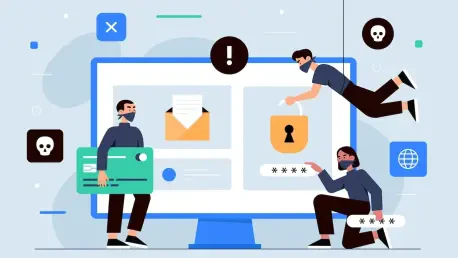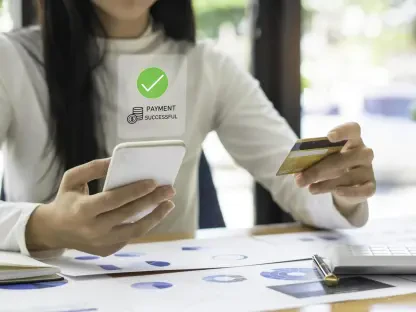In this interview, we have Zainab Hussain, an acclaimed e-commerce strategist specializing in customer engagement and operations management. Zainab offers her insights into the ongoing transition toward electronic payment methods, the risks associated with traditional paper checks, and the impact of emerging technologies on security and user experience.
What prompted the joint submission of comments by your organizations to the U.S. Department of the Treasury?
The submission was motivated by a pressing need to address the vulnerabilities and inefficiencies inherent in paper checks. Recognizing that the Treasury’s goal aligns with modernizing payment infrastructure, we wanted to emphasize reducing fraud and losses. Our combined efforts aim to ensure policymakers understand the critical nature of swiftly transitioning to electronic systems for government disbursements.
How does the transition to electronic payment methods align with the goals set by the Executive Order on Modernizing Payments?
The Executive Order prioritizes modernizing the nation’s payment systems to be more efficient and secure. Transitioning to electronic payments fits perfectly with these goals as it promises faster payment processing, heightened security against fraud, and increased financial accessibility for recipients. It represents a strategic move towards streamlining government operations while safeguarding taxpayer dollars.
Can you elaborate on the specific risks associated with paper checks in government disbursements?
Paper checks are susceptible to several risks, notably theft and fraud. Checks can be intercepted during mailing, leading to financial losses for both the government and its citizens. The delays inherent in check processing can also cause challenges and inconvenience for recipients expecting timely payments. By eliminating these methods, we can mitigate these risks substantially.
How significant is check fraud in the overall landscape of fraud losses, particularly in 2024?
Check fraud comprises a substantial portion of overall fraud losses, with data showing it accounts for about 32% in 2024. This is a significant figure, highlighting the urgent need for secure alternatives. Such losses impact not only financial institutions but also undermine trust in payment systems, making the case for electronic alternatives even more compelling.
To what extent has mail theft contributed to check fraud, based on recent studies or data?
Mail theft is a significant contributor to check fraud, with a reported $688 million in losses from February to August 2023 alone. This figure underscores the exposure and risks involved with mail delivery of checks, often targeted because they’re a tangible, stealable asset. It also reflects a broader trend where digital alternatives could greatly reduce these vulnerabilities.
Why are Treasury checks frequently targeted by fraudsters, and what regulations make them vulnerable?
Treasury checks are prone to fraud primarily due to their high volume and the regulatory requirement for funds to be available shortly after deposit. This available-then-clear regulation makes them an attractive target for fraudsters, who exploit the immediate accessibility of funds before any verification processes might detect fraudulent activity.
What findings have surfaced regarding the preferences of older generations for paper checks, and what impact does age have on payment method preference?
Research indicates that older Americans have a stronger preference for paper checks, with each additional year of age increasing the likelihood of preferring checks by about 0.5%. This generational preference impacts the pace and adoption rates of electronic payment systems, suggesting a need for targeted education and user-friendly technology to cater to this demographic.
Can you discuss the strategies you believe Treasury should employ to raise awareness among consumers about electronic payments?
Treasury should initiate a comprehensive public awareness campaign highlighting the advantages of electronic payments, such as speed, security, and ease of use. By showcasing personal testimonials and practical demonstrations, they can bridge the knowledge gap and alleviate concerns about the shift from traditional methods. The goal is to foster trust and widespread adoption through education and reassurance.
How do existing electronic payment platforms like The Clearing House’s ACH service and Zelle® enhance security and usability?
These platforms offer robust security measures, including advanced encryption and real-time monitoring to prevent fraudulent activity. They are designed with user experience in mind, making transactions straightforward and seamless. Such attributes increase consumer confidence, setting a benchmark for secure and user-friendly electronic payments across institutions.
What additional investment in fraud detection and prevention tools do you think is necessary?
Investment in cutting-edge fraud detection technologies, such as machine learning and AI-powered analytics, is essential. These tools can help identify and react to suspicious patterns and anomalies in real-time. Strengthening identity verification processes is also crucial to prevent unauthorized access and ensure that only legitimate transactions are completed.
What exceptions to electronic payments might exist, and how can banks assist in identifying fraudulent checks?
Some exceptions might arise from cases requiring physical proof or inefficient access to digital systems. However, banks can play a vital role by deploying sophisticated detection systems and training staff to recognize counterfeit checks. Collaboration with financial institutions is key to swiftly identify and curtail check fraud instances.
Why is it important to study government payment data concerning consumer reliance on paper checks, and what insights could this data provide?
Studying payment data can reveal underlying reasons for continued reliance on checks, such as accessibility issues or trust factors. Insights gathered can guide policy and infrastructure development to better accommodate consumer needs. It also offers an opportunity to streamline processes, ensuring barriers are addressed to encourage broader acceptance of digital payments.
What is your forecast for the future of payment systems?
I anticipate an accelerated shift towards more innovative and secure digital payment solutions, significantly reducing reliance on paper methods. As technology evolves and consumer confidence in digital transactions grows, we’ll see broader adoption of diverse payment platforms, further fortifying our financial systems against fraud while enhancing user convenience.









